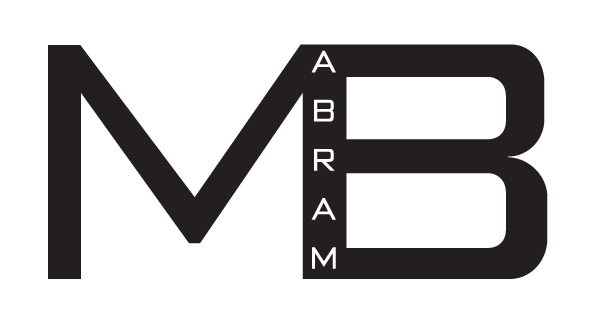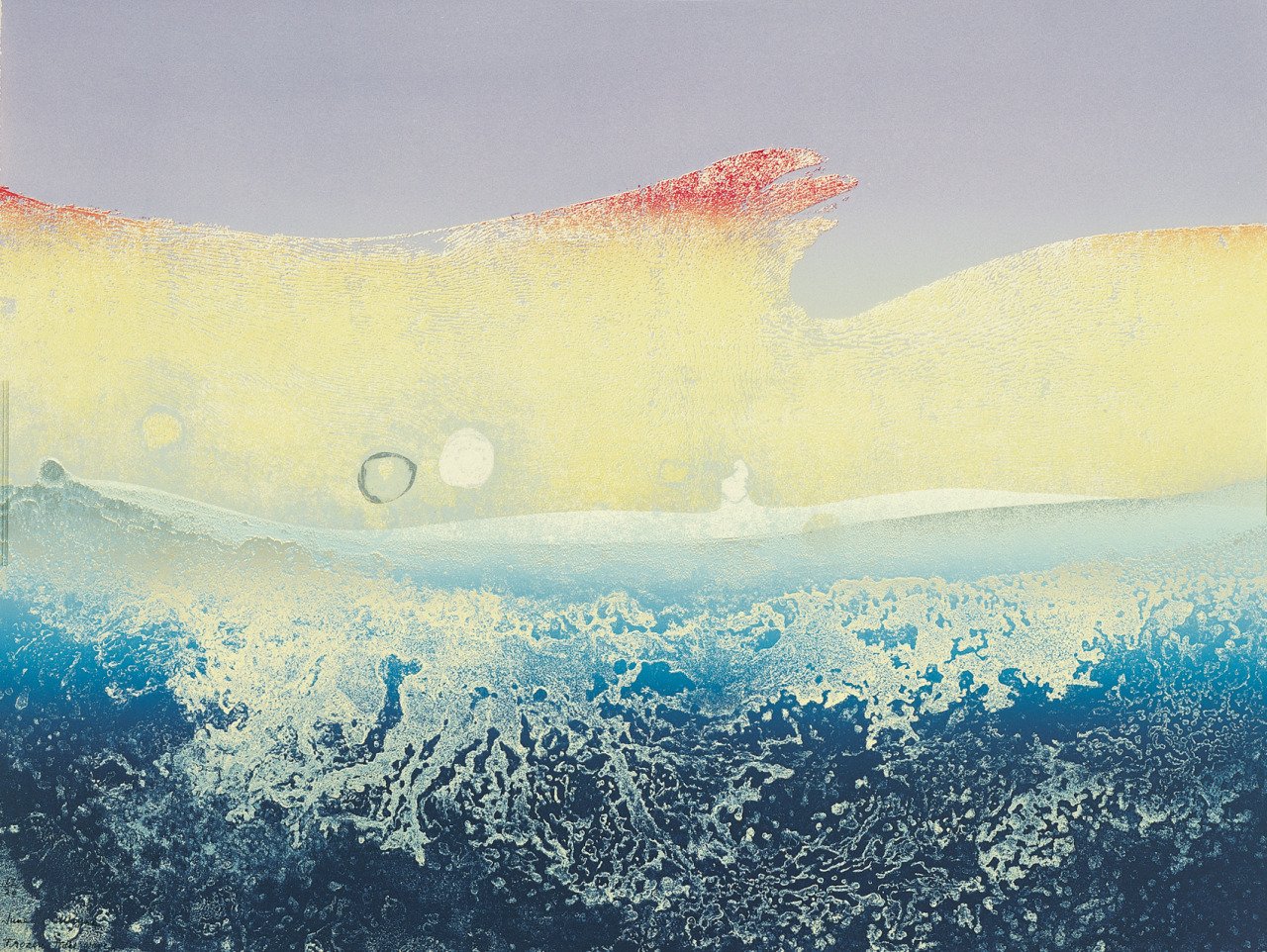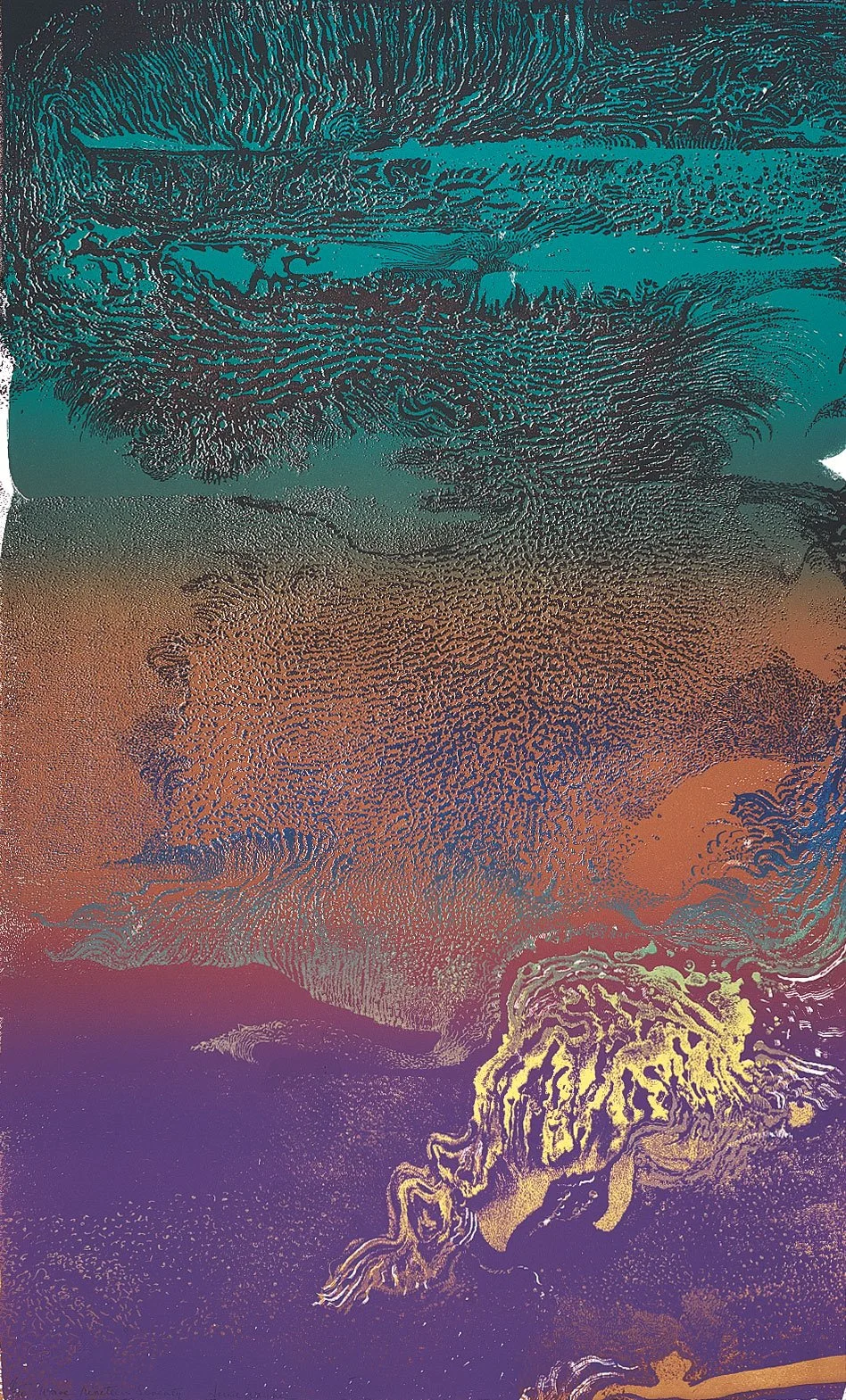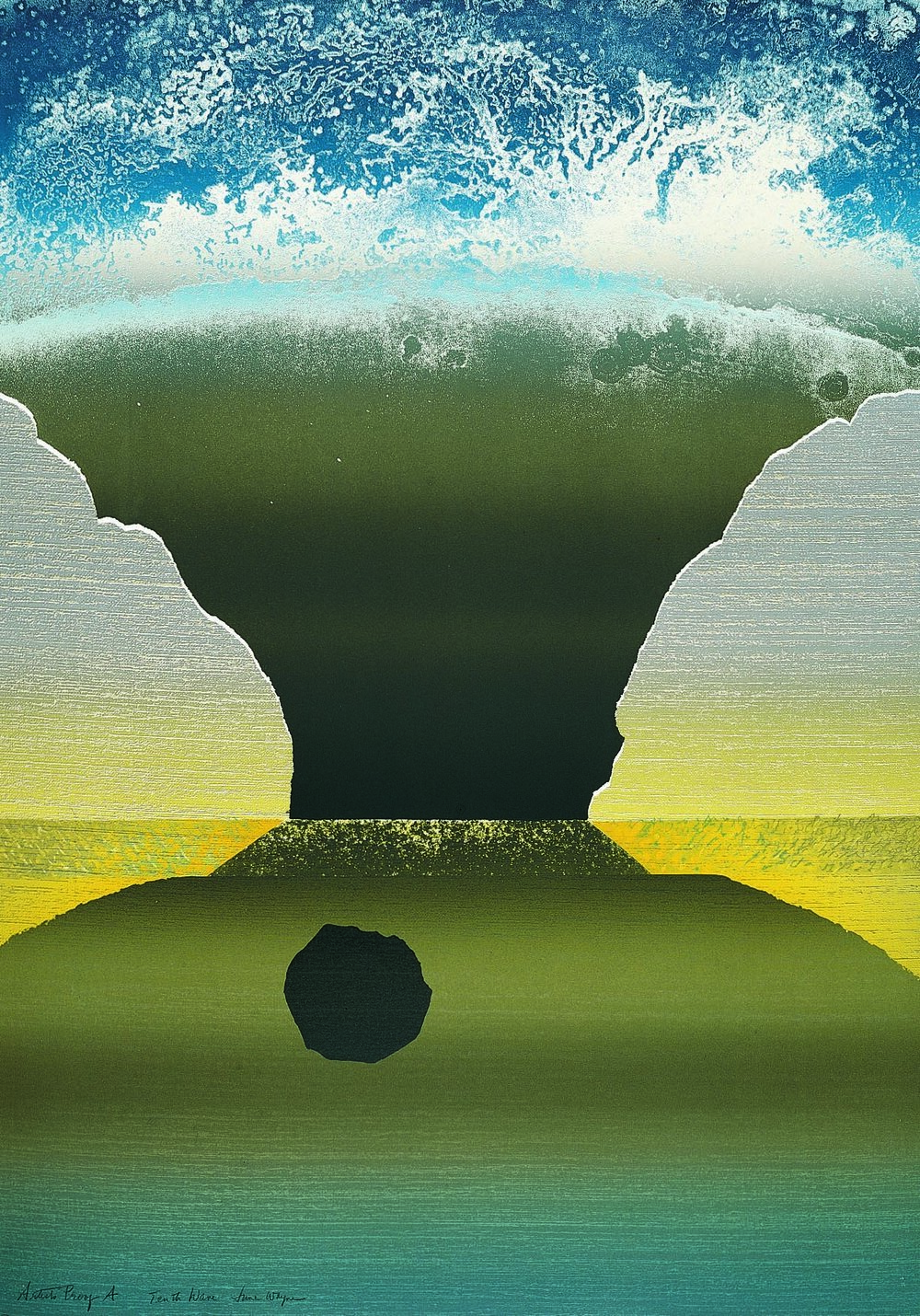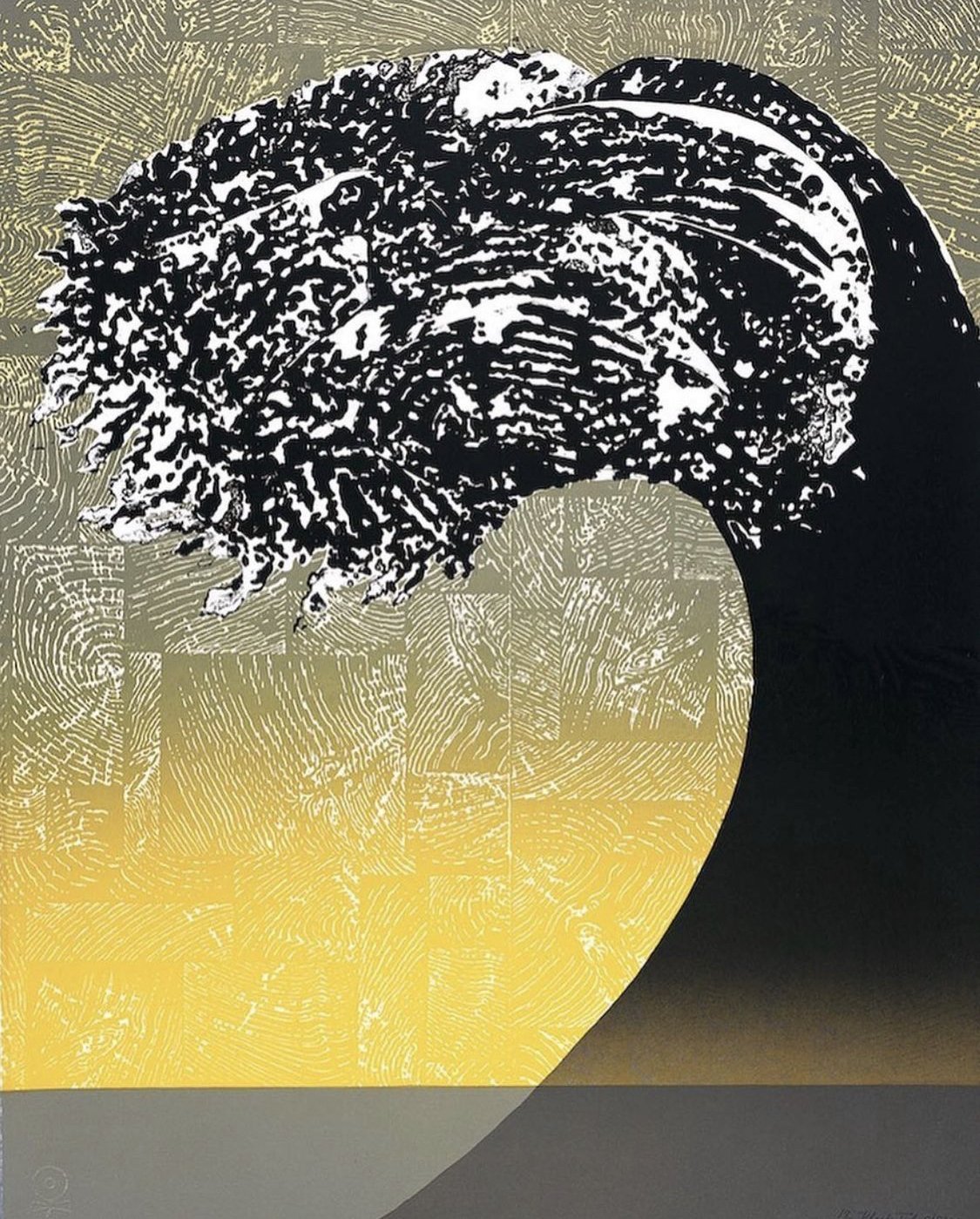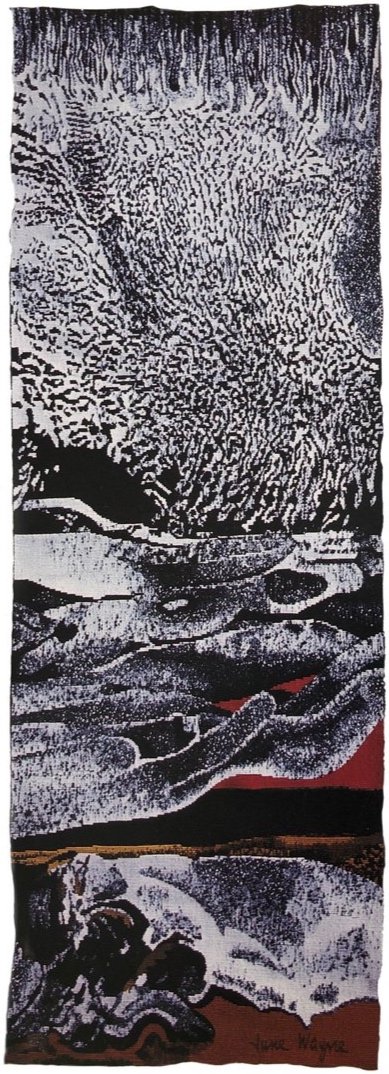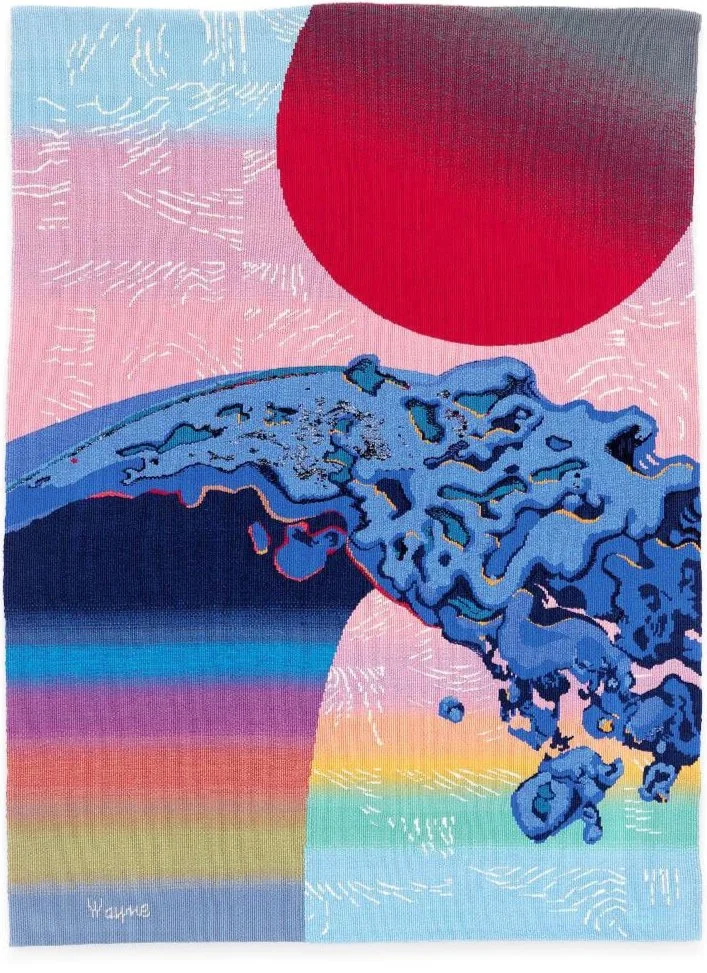JUNE WAYNE・Art + Science
The Terrestrial Works
Tidal Waves
“Waves are such a great mystery, especially for an artist to draw. A wave has no edges. Whatever it does, it does far away from where you can really see it. We think the water is rushing towards us. Actually the action is quite different. Everything is rushing towards us and the water takes on the shape of that energy but actually any particular spot is mostly going up and down. It’s paradoxical—it ain’t what you see. You can’t be sure what you’re looking at. And yet it’s also a force that has no respect whatsoever for your opinion. It’s the human dilemma.”
“I wanted to suggest the enormous scale of that kind of water manifestation. How do you do that, especially when a wave is so insistent upon simply falling away? For it to become aggressive it had to be almost like a person—rearing up like some sort of creature. And that was the aesthetic device which animated these large prints.”
“‘Tenth Wave’ is a particularly striking example of the artist’s Leonardo-esque mentality. An apocalyptic tidal wave simultaneously suggests the mushroom cloud of a nuclear explosion, the Rorschach blot of psychological subjectivity and—intriguingly—the notion of art made less by human effort than by calculated chemical reaction.”
“In using tapestries to convey contemporary themes, Wayne characteristically acted as the “fearless, multifaceted artist who accepted no limitations and who would venture toward anything that intrigued her, fascinated her, or caught her fancy.”
“She chose tapestry because the element of time contained within the weaving process itself is cumulative, and remains implied in the result. The weaving of tapestry is intensive, rhythmical, and slow. In these characteristics, Wayne found a direct and appropriate way by which she could transmit to the viewer a sense of time passing that is internal to the process. She can lead the viewer beyond real time to read certain works at a quickened pace, or to perceive others in extended cosmic time.”
